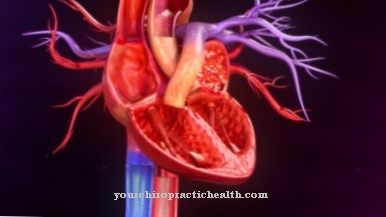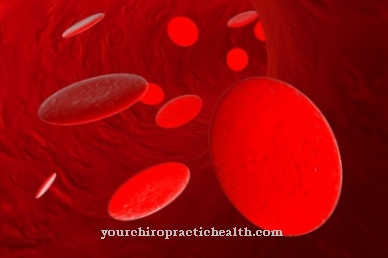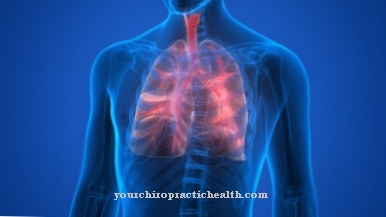Of the Carbohydrate metabolism or Sugar metabolism is a vital process in the human body. A sufficient supply of energy is essential to ensure the functioning of the organism. The carbohydrates are the most important source of energy for this. Ingested carbohydrates are broken down into simple sugars, for example glucose, via certain enzymes and can be used by the body in this form. If the metabolic process is faulty, there is a metabolic disorder. The most common disorder in the sugar metabolism is diabetes mellitus.
What is the carbohydrate metabolism?

The carbohydrate metabolism controls the absorption, conversion, transport and breakdown of carbohydrates in the human body. The process takes place in several steps and is a vital process.
Carbohydrates, also known as sugar, are the most important source of energy for the human body. The individual processes that take place in the metabolism of carbohydrates enable the body to use the sugar molecules ingested through food in the form of energy.
Carbohydrates are broken down in the metabolism, absorbed through the wall of the small intestine and reach the body cells via the bloodstream. Sugar molecules that are not needed for acute energy gain are converted into fat molecules or are stored in the liver and muscles. End products of carbohydrate metabolism are excreted in the faeces and urine.
Function & task
Along with proteins and fats, carbohydrates are among the main nutrient groups that are consumed through food. Carbohydrates are divided into monosaccharides (single sugars), disaccharides (double sugars) and polysaccharides (multiple sugars). Important representatives of the monosaccharides are fruit sugar (fructose), grape sugar (glucose) and mucus sugar (galactase).
Carbohydrates that are ingested through food are mostly in the form of di- or polysaccharides. In order for the organism to be able to use these nutrients, the sugar molecules must first be converted to glucose. To do this, the human body releases certain enzymes during digestion that break down carbohydrates that have been taken in.
The glucose is broken down in several metabolic steps into what is known as adenosine triphosphate, ATP, and in this form is available to the body as an energy source. The more complex the structure of the carbohydrate, the longer it takes to transform the organism.
The brain in particular needs glucose as a source of energy. After the carbohydrates have been broken down into glucose, the sugar is delivered to the respective body cells in the form of ATP via the bloodstream. When the cells are already adequately supplied with energy, the glucose in the body is reassembled into new starch molecules and stored in the muscles and in the liver in the form of glycogen.
In states of hunger or during increased physical exertion, glycogen can be broken down into glucose again and provides the organism with energy. Glycogen is the carbohydrate store in the human body. These storage depots are limited, however. When the stores are already filled enough, unused carbohydrates are converted into fat in the liver. This fat is stored in adipose tissue. If the energy supply is above the required energy for a longer period of time, this can lead to obesity.
Illnesses & ailments
If the metabolism does not run smoothly, there is a so-called metabolic disorder. The body cannot use the nutrients it has absorbed and they do not arrive where they are needed. A specific enzyme is responsible for every step of the metabolism. In the case of a metabolic disorder, there is therefore an enzyme defect. The result is that substances accumulate where they don't belong and at the same time there is a lack of certain nutrients in another place in the body.
The most common disorder of the carbohydrate metabolism is the so-called diabetes mellitus. This condition can be divided into two main groups.In a type 1 diabetic, the cells in the pancreas that are responsible for making insulin are destroyed. In type 2 diabetes mellitus, there is no absolute insulin deficiency. Rather, the effect of the insulin is reduced by the formation of resistance.
Insulin is the only hormone in the body that can lower blood sugar levels. This hormone and its counterpart glucagon ensure that the blood sugar level is kept constant and are essential for life. After the consumption of carbohydrates such as potatoes, pasta and bread, the sugar level in the blood rises. A high blood sugar level signals that the cells are adequately supplied with energy. In this case, insulin is released, which promotes the absorption of glucose into the muscle and fat tissue and thus lowers the blood sugar level again.
Furthermore, insulin inhibits the breakdown of glycogen into usable energy in the liver. The glucagon, on the other hand, increases blood sugar levels by promoting the breakdown of glycogen into usable energy in the liver. The two hormones thus control the absorption and breakdown of carbohydrates in the human body. Without insulin, the blood sugar level in the human body remains permanently high. The body cannot transport the energy from carbohydrates into the cells without insulin.
Furthermore, this condition damages the blood vessels and promotes various secondary diseases. These include, for example, circulatory disorders in the arms and legs, heart attacks, strokes and kidney disorders. In diabetes mellitus it is therefore necessary to provide the body with insulin artificially. With type 1 diabetes mellitus, lifelong insulin therapy is unavoidable. Type 2 diabetes mellitus does not always have to be treated with medication and can even be cured with a change in diet and sufficient exercise.













.jpg)

.jpg)
.jpg)











.jpg)